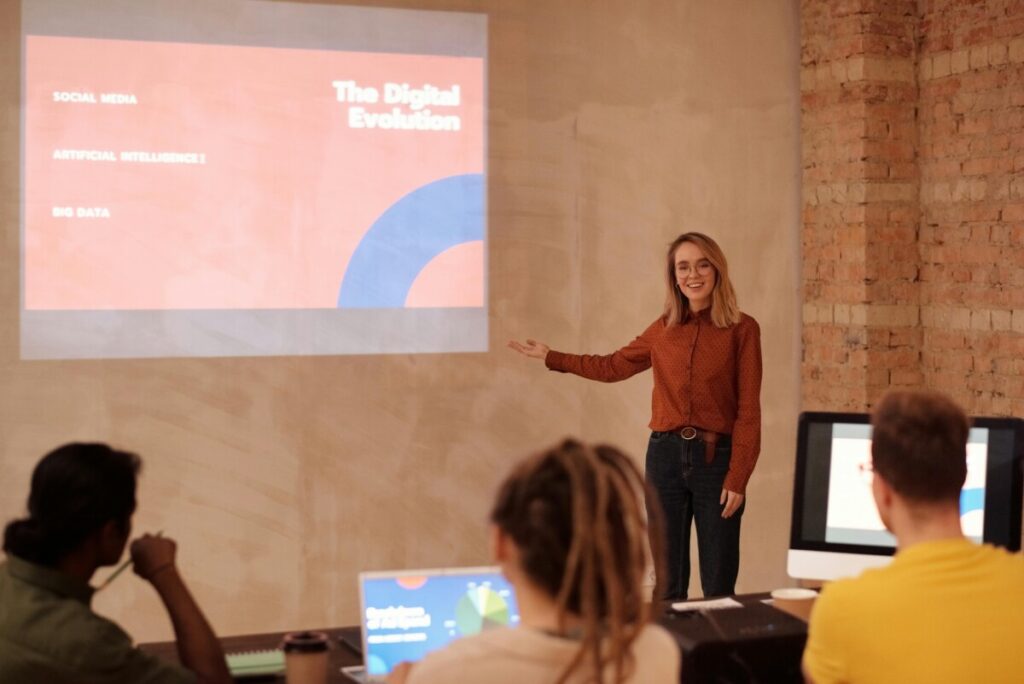“The 7 Habits of Highly Effective Leaders”

Leadership is a crucial aspect of any successful organization. Effective leadership habits can make or break a team’s success. In this blog post, we will explore the 7 habits of highly effective leaders that have stood the test of time. These principles are not only applicable to leaders in the corporate world but also to individuals seeking personal development and success in any area of life.
Habit 1: Be Proactive
Highly effective leaders take responsibility for their actions and outcomes. They understand that they have the power to choose their responses to any situation. Instead of reacting to circumstances, they proactively seek solutions and take action. Being proactive allows leaders to stay ahead of challenges and seize opportunities. Proactive leaders also focus on their circle of influence. They understand that they cannot control everything, but they can control how they respond to situations within their control. By focusing on what they can influence, they maximize their impact and create positive change. Additionally, proactive leaders continuously seek personal development and growth. They invest in acquiring new skills and knowledge, which helps them stay relevant and adaptable in a rapidly changing world.
Habit 2: Begin with the End in Mind
Effective leaders have a clear vision of where they want to go. They define their goals and align their actions with their desired outcomes. By starting with the end in mind, leaders can make informed decisions and prioritize their efforts. This habit also helps leaders stay focused and avoid getting distracted by short-term temptations or obstacles. Leaders who begin with the end in mind also create a compelling vision for their team. They communicate this vision effectively and inspire others to contribute towards achieving it. By sharing a common purpose, leaders can rally their team and foster collaboration, which leads to greater success. Furthermore, leaders who begin with the end in mind regularly evaluate their progress and make adjustments when necessary. They understand that circumstances may change, and flexibility is crucial for success.
Habit 3: Put First Things First
Highly effective leaders prioritize their tasks and focus on what matters most. They understand the difference between important and urgent and allocate their time accordingly. By identifying their key priorities, leaders can make progress toward their goals and avoid getting overwhelmed by trivial tasks. Putting first things first also involves effective time management. Leaders set clear goals, establish deadlines, and create action plans to ensure they stay on track. They eliminate distractions and delegate tasks when appropriate, allowing them to devote their energy to high-value activities. Additionally, leaders who put first things first recognize the importance of work-life balance. They strive to maintain a healthy equilibrium between their personal and professional lives, understanding that their well-being impacts their effectiveness as leaders.
Habit 4: Think Win-Win
Effective leaders embrace a win-win mindset. They seek mutually beneficial solutions that satisfy the interests of all parties involved. By focusing on collaboration and cooperation, leaders build strong relationships and foster an environment of trust. Thinking win-win also involves effective communication and active listening. Leaders understand the importance of understanding others’ perspectives and finding common ground. By valuing the input of their team members, leaders can make informed decisions and create shared ownership. Furthermore, win-win leaders celebrate the success of others. They recognize and appreciate the contributions of their team members, cultivating a culture of recognition and motivation. This habit enhances team morale and encourages individuals to strive for excellence.
Habit 5: Seek First to Understand, Then to Be Understood
Highly effective leaders prioritize listening and understanding before expressing their own views. They seek to understand the needs, concerns, and perspectives of others before sharing their own thoughts. By doing so, leaders build trust and create an environment where open communication is valued. Seeking first to understand also involves empathy. Leaders put themselves in others’ shoes and strive to see the world from their perspective. This habit helps leaders make more informed decisions and respond to conflicts or challenges with compassion and understanding. Additionally, leaders who seek first to understand create opportunities for diverse opinions and ideas. They encourage open dialogue and value different perspectives, fostering a culture of innovation and creativity.
Habit 6: Synergize
Effective leaders recognize the power of collaboration and synergy. They understand that by combining the strengths and talents of their team members, they can achieve greater results than they could individually. Synergistic leaders create an environment where diversity is embraced, and everyone’s contributions are valued. Synergizing also involves effective teamwork and communication. Leaders encourage open dialogue and create opportunities for collaboration. They promote an inclusive culture where every team member feels heard and valued. Furthermore, synergistic leaders leverage the strengths of their team members and assign tasks based on individual expertise. By creating a balanced and complementary team, leaders ensure synergy and maximize performance.
Habit 7: Sharpen the Saw
Highly effective leaders prioritize self-care and personal development. They understand the importance of continuous improvement and invest time in sharpening their skills and knowledge. By taking care of their physical, mental, and emotional well-being, leaders enhance their effectiveness and resilience. Sharpening the saw also involves seeking feedback and learning from mistakes. Leaders embrace a growth mindset and view challenges as opportunities for growth. They reflect on their experiences and make adjustments to improve their leadership abilities. Additionally, leaders who sharpen the saw take time for self-reflection and introspection. They cultivate mindfulness and develop a deep understanding of their values and purpose. This habit helps leaders stay aligned with their principles and make decisions that align with their long-term vision.
Conclusion
The timeless principles of the 7 Habits of Highly Effective Leaders can profoundly impact personal and professional development. Embracing these habits can amplify leadership effectiveness, cultivate strong relationships, and foster enduring success. Whether in a corporate, entrepreneurial, or aspiring leadership role, integrating these habits into daily life is pivotal for continuous growth and achievement.
https://serenity7wellness.com/index.php/2024/01/18/strategies-for-personal-development/
https://en.wikipedia.org/wiki/Main_Page
https://www.franklincovey.com/the-7-habits/
https://dplearningzone.the-dp.co.uk/wp-content/uploads/sites/2/2015/06/Covey.pdf
FAQs
1. What are the 7 Habits of Highly Effective Leaders?
Answer: The 7 Habits of Highly Effective Leaders are a set of principles designed to help individuals become more effective in leadership and in their personal lives. Though the original “7 Habits” are aimed at personal effectiveness, they can be adapted for leadership as follows:
Be Proactive: Leaders take the initiative and the responsibility to make things happen.
Begin with the End in Mind: Effective leaders set clear goals and objectives, envisioning what they want to achieve in the long term.
Put First Things First: They prioritize and manage their time and resources around their most important goals.
Think Win-Win: They look for mutually beneficial solutions and strive to build strong relationships with stakeholders.
Seek First to Understand, Then to Be Understood: Leaders listen empathetically, gaining insights into the needs and perspectives of others before communicating their own.
Synergize: They value and leverage diverse perspectives to create innovative solutions and achieve better results.
Sharpen the Saw: Effective leaders continuously learn and improve themselves, keeping their skills and knowledge updated.
2. How can “Be Proactive” make someone a more effective leader?
Answer: Being proactive means taking responsibility for your actions and focusing on things within your control. For leaders, this habit emphasizes the importance of leading by example, taking initiative, and addressing challenges head-on rather than reacting passively to circumstances. Proactive leaders inspire their teams to take responsibility and act with initiative, fostering a proactive culture within their organizations.
3. What does “Begin with the End in Mind” imply for leadership?
Answer: For leaders, beginning with the end in mind involves setting clear visions and goals for their teams and organizations. It means having a clear understanding of the desired outcomes and aligning the team’s efforts towards achieving these goals. This habit encourages strategic planning and goal-setting, ensuring that every action and decision contributes to the overarching objectives.
4. Why is “Seek First to Understand, Then to Be Understood” important in leadership?
Answer: This habit is crucial for effective communication and relationship-building in leadership. By genuinely listening and seeking to understand the perspectives, challenges, and needs of team members and stakeholders, leaders build trust and respect. This understanding enables them to communicate their ideas and visions more effectively, ensuring that their messages are received and understood as intended.
5. How does “Sharpen the Saw” apply to leaders?
Answer: “Sharpen the Saw” refers to the habit of continuous personal and professional development. For leaders, this means regularly investing time and resources in their growth, such as learning new skills, staying abreast of industry trends, and maintaining physical, mental, and emotional well-being. This habit ensures that leaders remain effective and capable of navigating the complexities of leadership and adapting to change.








